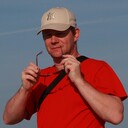0 Likes
In the 16th century, when the Spanish colonisation in the area began, El Hatillo was inhabited by indigenous tribes of Mariches, descendants of the Caribs. Cacique Tamanaco was the leader of these tribes, known for resisting the Spanish colonisation. As the colonisation developed, the indigenous inhabitants were killed; by order of Caracas's founder Diego de Losada, Tamanaco was also murdered.[1]A plaque in front of Baltasar's house describes how he donated land to construct El Hatillo Town (click to read translation).In 1752, Don Baltasar de León García[5] arrived to El Hatillo from Cádiz, Spain, having just completed a prison term at La Carraca, Spain, for opposing (with his father) the monopoly rules of Guipuzcoana Company, which was in charge of maintaining exclusive trade between Spain and Venezuela.[6] Don Baltasar founded El Hatillo Town, becoming one of the most significant contributors to its early development. Don Baltasar focused on making El Hatillo a strong, united and independent community,[7] aiming to establish the area as a distinct parish from Baruta, on which El Hatillo depended. He accomplished this on June 12, 1784, when the governor and the bishop agreed to declare El Hatillo autonomous and under the direction of Don Baltasar, in front of 180 Canary-descendant families; this date is accepted as the foundation date of El Hatillo Town.[8]That same year, Don Baltasar and his brother-in-law donated their properties to the town, and an engineer assisted in the urban planning, which included grid streets and a parish church.[8] The church was built to honor Santa Rosalía de Palermo, who Baltasar believed had saved him from a plague that killed his father in prison.[9] In 1803, at the age of 79, Don Baltasar was unexpectedly killed in a horse accident.[10]In 1809, landlord and Lieutenant Colonel Manuel Escalona[11] achieved the separation of El Hatillo from Petare, another suburb of Caracas, making it a different Tenientazgo de Justicia – a type of administrative division at the time. On April 19, 1810, Escalona enjoined the town to the movement of independence under Simón Bolívar, becoming another important person in the history of the municipality.[12]Ana Francisca Pérez García, Don Baltasar's wife, was a noteworthy woman in El Hatillo, attending to community children, elders and ill citizens. She donated a considerable amount of money for the construction of a hospital in Petare after the 1812 earthquake; this hospital is currently known as the Pérez de León de Petare Hospital.[12]One of the most ambitious urbanisation projects in El Hatillo since its founding was the neighborhood called La Lagunita. In the 1950s and 1960s, La Lagunita S.A. constructed a "functional, futuristic and comfortable" residential zone. To encourage people to settle in the area, each parcel included a membership to Lagunita Country Club, which was officially opened in 1964. Brazilian landscape designer Roberto Burle Marx contributed to this project, constructed on the 4.3 million m² hacienda that once belonged to former Venezuelan president, Eleazar López Contreras.[13] La Lagunita has since become a wealthy neighborhood of El Hatillo.Although El Hatillo has been independent from Petare since 1809, it later became part of Sucre Municipality, where Petare is located. On November 19, 1991, Miranda's Legislative Assembly gave El Hatillo full autonomy, making it an independent municipality; this decision was issued in Gaceta Oficial on January 17, 1992.[14] In 1993, Mercedes Hernández de Silva was elected the first mayor of El Hatillo.[8] Since 2000, the Alcaldía Mayor manages some of the functions of the municipality.
http://en.wikipedia.org/wiki/El_Hatillo_Municipality,_Venezuela
...




